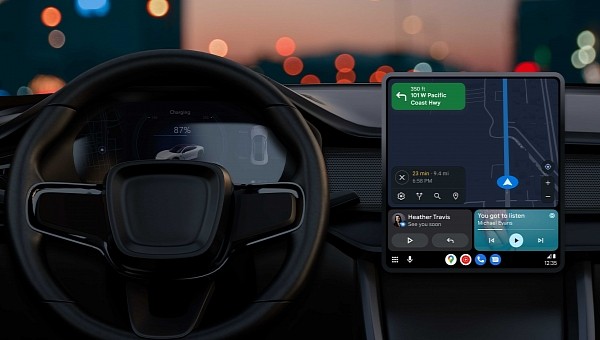The benefits of Android Auto wireless over its wired sibling are more than obvious. Thanks to the wireless connection, users can finally give up on cables, and this is good news for a wide variety of reasons.
But the most important is, without a doubt, the improved reliability. Cables have long been considered one of the most common culprits for a ruined experience with Android Auto, so going for the wireless mode helps avoid this nightmare.
Unfortunately, some of those who made the switch to the wireless version of Android Auto seem to regret the old-fashioned cables. And it’s all due to various bugs that are impacting their experience with the app.
The most recent report on this front comes from users who updated their Android devices to Google’s most recent version of the mobile operating system. We’ve known for a while that, in some cases, Android 13 doesn’t play nice with Android Auto, but now it looks like it’s causing problems with the wireless mode as well.
Users claim that after installing Android 13, Android Auto wireless no longer allows them to lock the phone when the app is running on the head unit in their cars. The screen indeed appears to lock, but on the other hand, Android Auto seems to force it to remain lit as long as the app is running.
Locking the phone completely isn’t necessarily as straightforward as you’d expect it to be. In some cases, pressing the lock button doesn’t produce any change, while others claim that doing the same thing in a row eventually unlocks the screen and lets them lock the device.
At this point, it’s not yet very clear what’s causing this problem, but disconnecting the mobile device from Android Auto brings everything back to normal. Also, if the head unit also supports a wired Android Auto connection, switching to a cable seems to make a huge difference, as no screen issue is encountered whatsoever.
The one to blame appears to be Android 13, though it’s hard to tell why the new operating system keeps the screen active while Android Auto is running. Google has already confirmed that it’s looking into reports, but for the time being, it’s not yet clear if a fix is at least in the works.
What you can do, however, is to switch to a wired connection because, let’s be honest about it, keeping the screen of the device active for as long as Android Auto is running isn’t by any means the right way to go. On the other hand, some car buyers are paying extra just to get the wireless version of Android, so it’s not hard to see why this isn’t a convenient solution for everybody.
Unfortunately, some of those who made the switch to the wireless version of Android Auto seem to regret the old-fashioned cables. And it’s all due to various bugs that are impacting their experience with the app.
The most recent report on this front comes from users who updated their Android devices to Google’s most recent version of the mobile operating system. We’ve known for a while that, in some cases, Android 13 doesn’t play nice with Android Auto, but now it looks like it’s causing problems with the wireless mode as well.
Users claim that after installing Android 13, Android Auto wireless no longer allows them to lock the phone when the app is running on the head unit in their cars. The screen indeed appears to lock, but on the other hand, Android Auto seems to force it to remain lit as long as the app is running.
Locking the phone completely isn’t necessarily as straightforward as you’d expect it to be. In some cases, pressing the lock button doesn’t produce any change, while others claim that doing the same thing in a row eventually unlocks the screen and lets them lock the device.
At this point, it’s not yet very clear what’s causing this problem, but disconnecting the mobile device from Android Auto brings everything back to normal. Also, if the head unit also supports a wired Android Auto connection, switching to a cable seems to make a huge difference, as no screen issue is encountered whatsoever.
The one to blame appears to be Android 13, though it’s hard to tell why the new operating system keeps the screen active while Android Auto is running. Google has already confirmed that it’s looking into reports, but for the time being, it’s not yet clear if a fix is at least in the works.
What you can do, however, is to switch to a wired connection because, let’s be honest about it, keeping the screen of the device active for as long as Android Auto is running isn’t by any means the right way to go. On the other hand, some car buyers are paying extra just to get the wireless version of Android, so it’s not hard to see why this isn’t a convenient solution for everybody.









